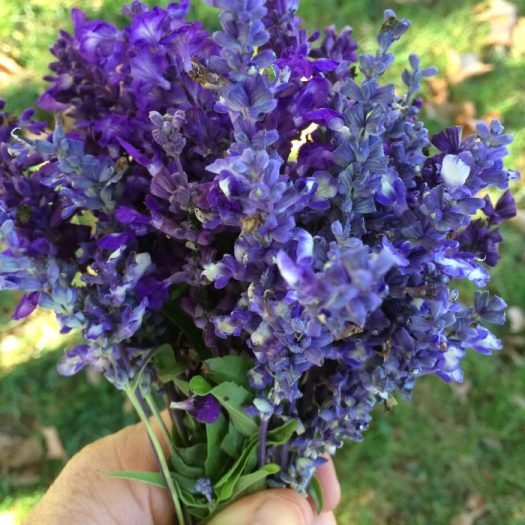With just over 1,000 varieties, Salvia is a huge genus of the mint family and comes in a dizzying array of colors, sizes and hardiness. Annual, perennial, biennial or shrubby, most varieties have stunning, colorful flowers and fragrant foliage. Tolerating a wide variety of soils and conditions, Salvias need minimal water to thrive. A garden designer for 25 years, I trust this family time and time again for my perennial border designs.
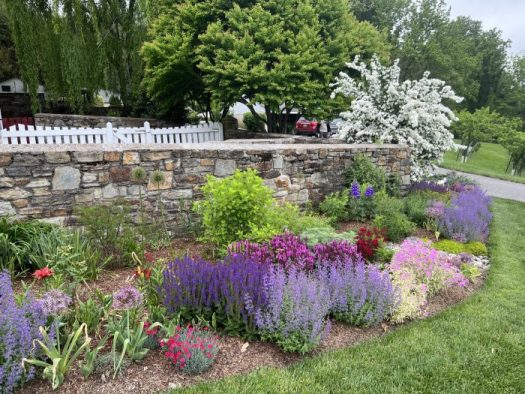
Hardy Salvias
To make a big impact and solve problems in difficult situations, including a large deer presence, I almost always select one of the members of the perennial Sage family, commonly known as Meadow Sage. When other plants begin to wilt, count on versatile Salvias to provide you with vibrant, long-lasting color in a rich palette of pinks, purples, whites and blues. Reliable reflowerers, you can count on extending salvia bloom from spring to late summer with careful selections. There are plenty of tender salvias that will extend their color show even further until the first frost arrives.
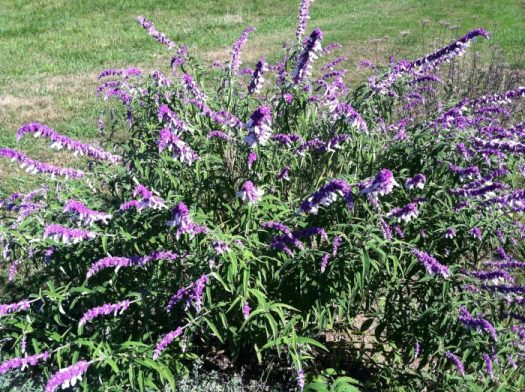
Skyscraper Salvias which come in a wide range of colors are another exceptional tender Salvia that I love, but I use them exclusively for containers. I found that when I planted them in a border, they got cranky and didn’t do well.
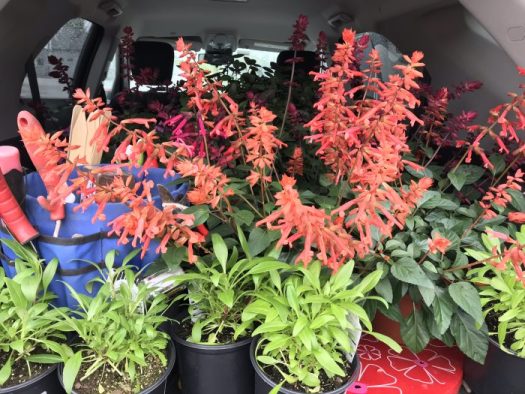
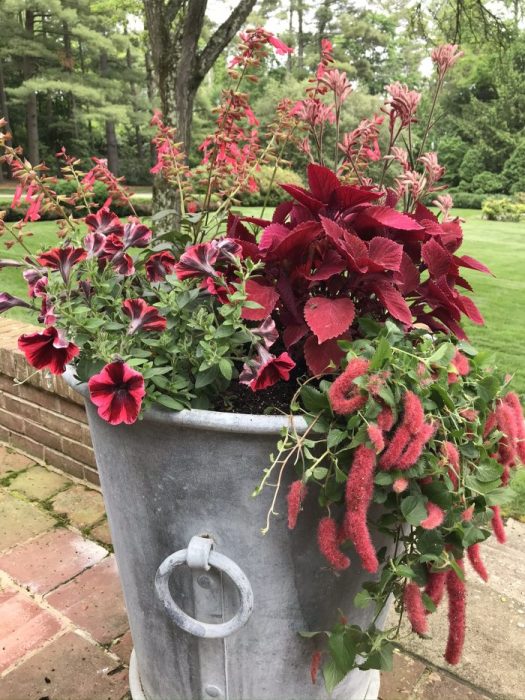
But as a garden designer who specializes in creating colorful herbaceous borders in the mid-Atlantic region, I use trusty, hardy salvias extensively in my designs and have found some to be more useful than others.
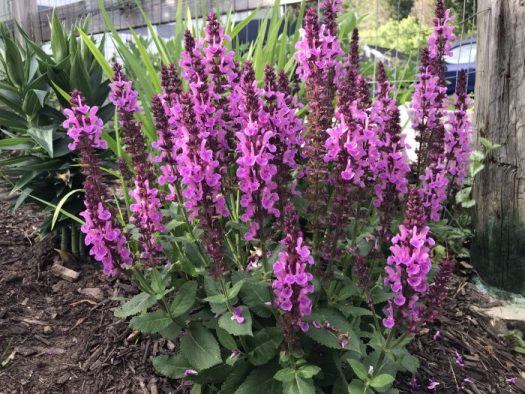
wonders
wild sage may nightPerennial Plant of the Year 1997, has an intense indigo-purple bloom that does well in the clay soil we are “blessed” with in the mid-Atlantic. But I almost always choose one of the newer varieties for their more compact size and wider range of colors. sage wood pink wonder and blue wonder They are truly little wonders in the landscape. Just a foot tall, these floriferous plants have repeat blooms all summer if you keep them deadheaded with a quick cut from your pruners. If you prefer to leave it alone, stemmed seed heads add interest and food to a wide range of birds, including finches. Large spikes of magenta pink flowers pink wonder It can be seen from afar and, like all salvias, is a pollinator favorite, attracting bees, butterflies and hummingbirds. I have seen hummingbirds dart in and out of sage flowers very methodically in search of nectar. Frontline workhorses, grouping them in groups of three to six gives you a greater impact. Readily available in nurseries, this is a no-brainer for sunny areas where deer frequent.
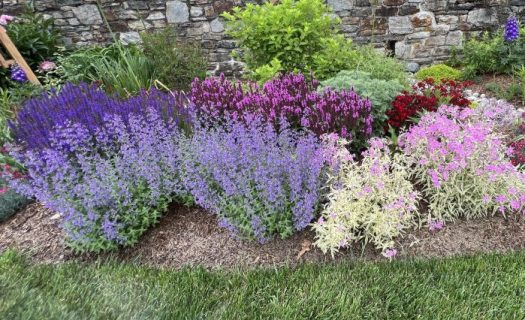
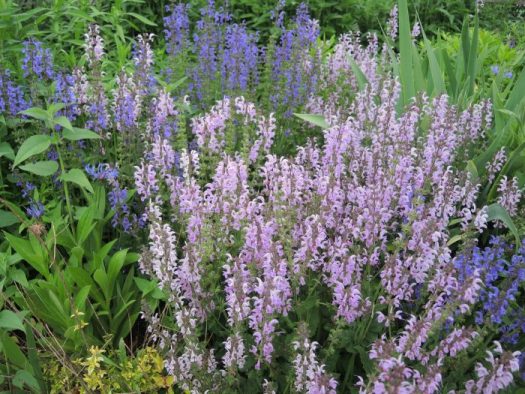
Eveline Sage and Purple Rain
Sage eveline It is a showy, pastel pink sage rarely seen in gardens, but one of my favorites and selected by Piet Oudolf for its superior color and extra-long flower spikes. When it blooms, only flowers are visible, no foliage, and it adds a soft pink to the border that pairs well with almost any other color. Very durable, tends to wander, but is easy to remove. A front border plant, the foliage like most other salvias, is a basal rosette of fragrance and the flowers are perfect for bouquets.
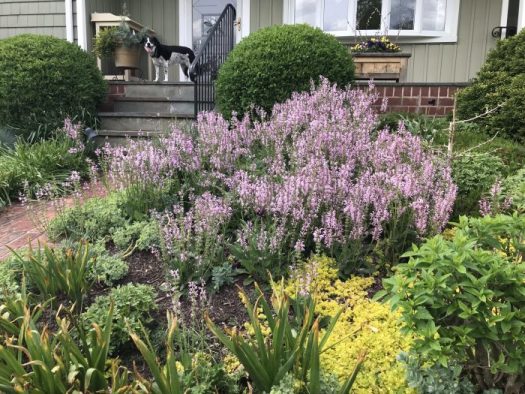
Salvia verticillata Purple Rain, Another pollinator magnet, it attracts with its dense, velvety purple flowers that can reach 24” tall on upright reddish stems. The foliage is especially attractive with wavy heart-shaped leaves. I first saw this cultivar in Scotland and have since used it in many gardens to obtain a striking selection.
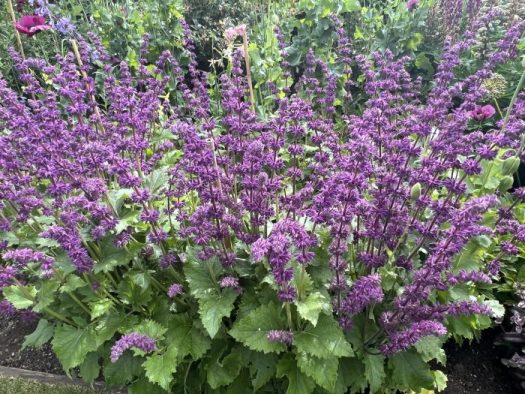
The first to bloom
For Salvia that blooms earlier, I take out Sallypink April night I pulled out of my quiver to extend the flowering season from mid-spring to summer. The electric violet-blue flowers appear a month before the award-winning May Night and its small size gives it pride of place at the front of the border.
If you prefer a native sage, there are several seminative Salvias that fit your needs and expand the color palette. salviagreggii red heat wave o Autumn Sage is hardy to our area and will bloom from May until frost.
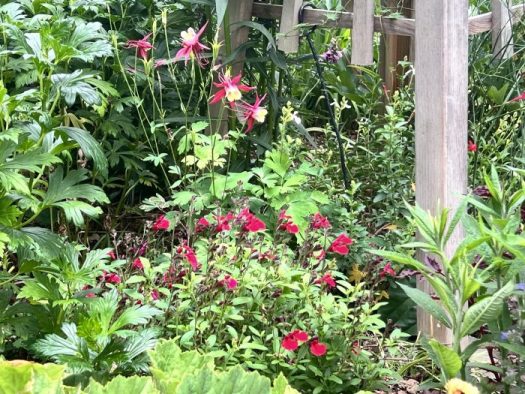
This is a totally different animal from the other salvias mentioned and is native to Texas, so it enjoys hot, dry conditions. More bush-like than the other salvias, it can grow up to two feet tall and is a blaze of color in the mid-edge. There is a new Mirage autumn wise men series – Mirage cherry red, cream, salmon, deep purple and soft pink – which I want to try. I cut myself arctic glow Come back August 1/3 for another intense flush of blooms to last the rest of the season.
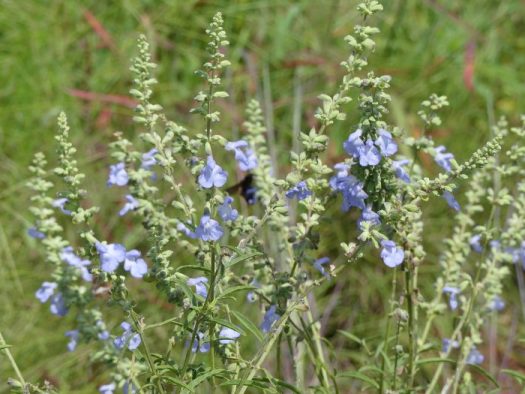
My final pick for a favorite sage is Salvia azurea ‘Nekan’, or pitcher sage, Originally from the southern United States. Visiting the Delaware Botanical Garden, I was struck by this selection of meadows by Piet Oudolf with spectacular sky-blue flowers and linear foliage. Extremely drought tolerant (roots can extend 6 to 8 feet underground), this is a hardy plant. Hardy to our area and open in stature, I looked it up and have now seen several of them in my garden. It needs some space so I planted it at the back of my borders as it can grow four feet tall. It is not aggressive, I plan to add a few more specimens and find that it does well in partial shade and I think it should be used more widely.

Excellent food sources for all types of wildlife, especially our ruby-throated hummingbird, sage is a plant that keeps on giving throughout the growing season. Leaving the final spent stems for the birds, the stems are easy to clean in the spring for another round of flowering. Easy to combine with other flowering plants, especially Nepetas, makes them a pleasure to design with.
